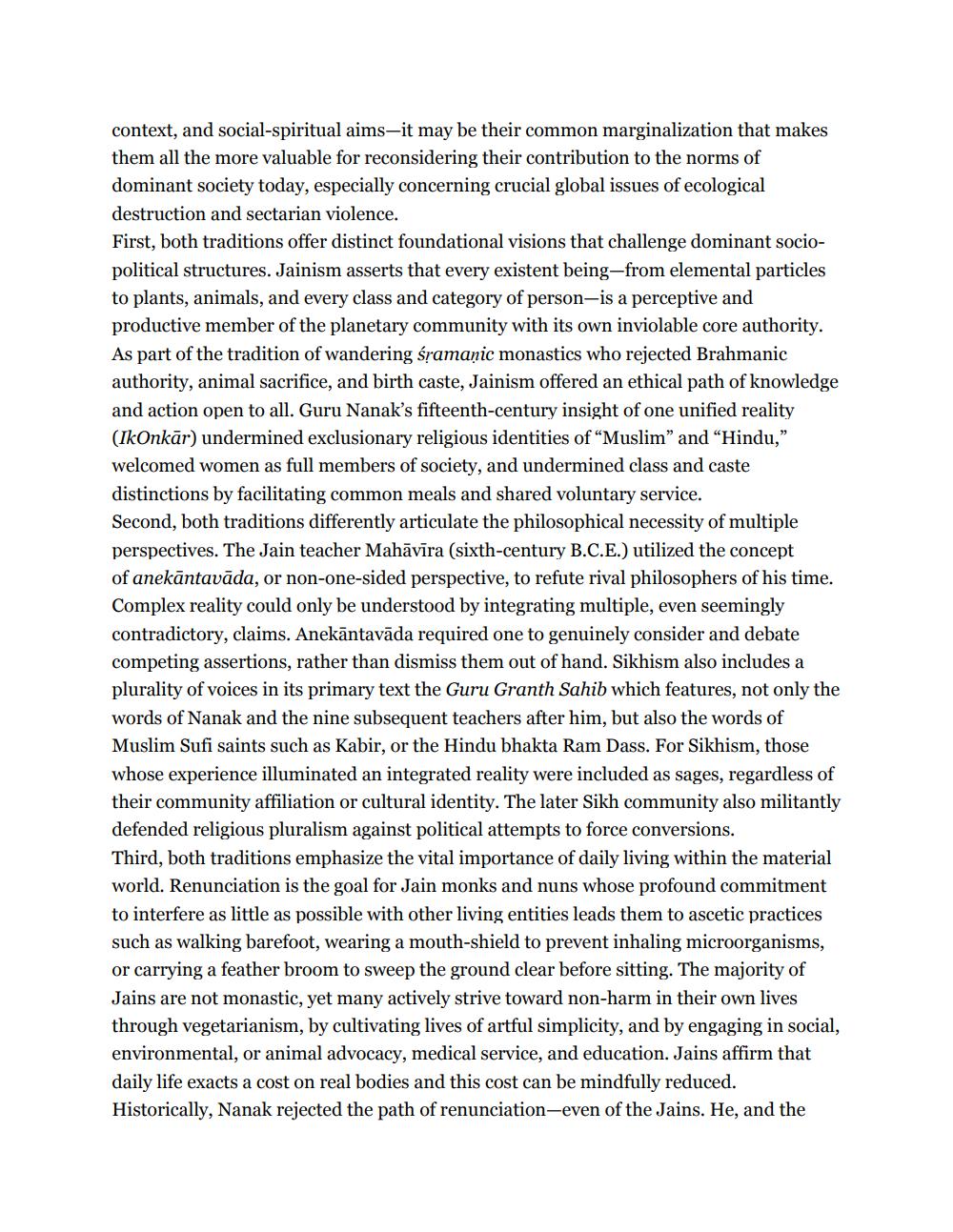________________
context, and social-spiritual aims-it may be their common marginalization that makes them all the more valuable for reconsidering their contribution to the norms of dominant society today, especially concerning crucial global issues of ecological destruction and sectarian violence.
First, both traditions offer distinct foundational visions that challenge dominant sociopolitical structures. Jainism asserts that every existent being-from elemental particles to plants, animals, and every class and category of person-is a perceptive and productive member of the planetary community with its own inviolable core authority. As part of the tradition of wandering śramanic monastics who rejected Brahmanic authority, animal sacrifice, and birth caste, Jainism offered an ethical path of knowledge and action open to all. Guru Nanak's fifteenth-century insight of one unified reality (IkOnkār) undermined exclusionary religious identities of "Muslim" and "Hindu," welcomed women as full members of society, and undermined class and caste distinctions by facilitating common meals and shared voluntary service. Second, both traditions differently articulate the philosophical necessity of multiple perspectives. The Jain teacher Mahāvīra (sixth-century B.C.E.) utilized the concept of anekantavāda, or non-one-sided perspective, to refute rival philosophers of his time. Complex reality could only be understood by integrating multiple, even seemingly contradictory, claims. Anekāntavāda required one to genuinely consider and debate competing assertions, rather than dismiss them out of hand. Sikhism also includes a plurality of voices in its primary text the Guru Granth Sahib which features, not only the words of Nanak and the nine subsequent teachers after him, but also the words of Muslim Sufi saints such as Kabir, or the Hindu bhakta Ram Dass. For Sikhism, those whose experience illuminated an integrated reality were included as sages, regardless of their community affiliation or cultural identity. The later Sikh community also militantly defended religious pluralism against political attempts to force conversions. Third, both traditions emphasize the vital importance of daily living within the material world. Renunciation is the goal for Jain monks and nuns whose profound commitment to interfere as little as possible with other living entities leads them to ascetic practices such as walking barefoot, wearing a mouth-shield to prevent inhaling microorganisms, or carrying a feather broom to sweep the ground clear before sitting. The majority of Jains are not monastic, yet many actively strive toward non-harm in their own lives through vegetarianism, by cultivating lives of artful simplicity, and by engaging in social, environmental, or animal advocacy, medical service, and education. Jains affirm that daily life exacts a cost on real bodies and this cost can be mindfully reduced. Historically, Nanak rejected the path of renunciation-even of the Jains. He, and the




